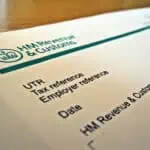Change from a Sole Trader to a Limited Company
Reading Time:
The flexibility and ease of running a sole trader business may be just what you need to get off the ground. However, switching to a limited company structure can make sense as your revenue grows.
In this article, you will learn how to switch from a sole trader business to a limited company.
What is a Sole Trader?
A sole trader is a person who operates their business and owns 100% of it. This means that every aspect of the operation and legalities are dealt with by one person, as opposed to a partnership or limited company where other people have interests in the business.
Sole traders have complete control over the business and can make all the financial decisions for their business. The important aspect of a sole traders is that they are personally responsible for all of the business debts because they cannot shelter behind the veil of being a separate legal entity from the business like in companies.
What is a Limited Company?
A limited company is a legal entity and has its own identity. The owners have limited liability, meaning their liability is limited to the interest they have in the company.
If your business fails or is sued, your personal assets are protected and are not at risk unless you have given personal guarantees for the debts of the company.
Sole Trader vs Limited Company Implications
If you operate as a sole trader or limited company, deciding to go from one type of business structure to another requires careful consideration and planning. There may also be tax considerations that can influence your decision to switch.
The main advantage of operating through a limited company is tax efficiency achieved mainly through controlling the amount of salary and dividend you would decide to pay to yourself. The first £2,000 dividend is tax-free and for a basic band taxpayer, divided over £2k will be taxed at current tax rate of 7.5%. This has increased to 8.75% from 2022-23. Further, in a company set up, you can make your spouse or a family member a shareholder and take advantage of a lower tax rate on dividend if they are taxpayer in the basic band. However, you may have to pay capital gains on assets transferred to the company.
On the other hand, doing business through a limited company, will give rise to more compliance obligations like filing statutory accounts and confirmation statement to the companies House.
Following is a summary table of the major differences in taxation.
| Aspect | Sole trader tax | Company tax |
|---|---|---|
| Taxable income | Taxed as income of the sole trader | Taxes as income of the company, separate from owners |
| Tax rates | Depending on income level 20%-45% | 19% for 2022-23 |
| National insurance | Class 2 and Class 4 | Payable by the company on employee salaries and wages class 1 and employer national insurance class 1A |
| Tax reporting | Annual self-assessment tax return | Annual corporation tax return |
| Pension contribution | Not allowable | Allowable subject to wholly and exclusively principal |
How to Convert from a Sole Trader to a Limited Company
Changing from a sole trader to a limited company is a straightforward process. Here are the steps you will need to take:
Register the Company
We have an excellent guide on company registration “Company formation – the next steps”. Please click here for guidance.
Transfer Assets
All your assets necessary for running the newly structured business may need to be transferred to your company, including intellectual property, Goodwill, land and building, inventory, machinery, and equipment. The assets are valued at market value on transfer for tax purposes.
Also Read: Paperless Office Tips
If your new company won’t have enough funds on hand to purchase these assets, the most common solution is establishing a director’s loan account for the company to pay for the assets over time.
Don’t know what a director’s loan account is? Take a look at our guide. It will walk you through everything you need to know so that you can get started right away.
However, transfer of assets from the sole trader to the newly incorporated company will have some tax implications. Major tax implications are as under.
- In case of transfer of property, the buyer, the company, may need to pay Stamp Duty Land Tax (SDLT).
- Transferer, sole trader, may need to pay Capital Gains Tax of upto 28% on the transfer of property to the company.
- Goodwill will need to be valued at market value and the sole trader may need to pay Capital Gains Tax on it.
The good news is that you will have some tax reliefs available mainly in the following forms.
- Incorporation relief
- Gift or holdover relief
- Business Asset Disposal Relief-BADR
The effect of both reliefs, incorporation relief and gift or holdover relief, is to defer the payment of capital gains tax until the disposal of the related assets.
Under BADR, you pay Capital Gains Tax at a reduced rate of 10% if eligible. You are eligible for BADR if.
- You are a sole trader or a partner in a partnership.
- You have been the owner of the business for at least 2 years.
However, an experienced accountant is recommended in this situation to help you take advantage of the different reliefs available.
Open a Business Bank Account
All limited companies with operations in the UK that have been registered with Companies House have business bank accounts.
You should set up a new bank account only for your business to keep your personal and business finances as separate as possible. If your banking details change, you need to let everyone who may be affected know, such as debtors and suppliers, immediately so that they can update their records if required.
Inform Stakeholders
Suppose you register a new company name or remain using your prior business name. In that case, you must notify your stakeholders that your firm’s legal structure has altered and that you are now trading as a limited company.
Examples of Stakeholders:
- Customers
- Debtors
- Suppliers
Enrol for PAYE and Tax
The Companies House will notify HMRC once your new business has been established; you will receive a letter to your company’s registered office address around two weeks after its formation from the HMRC.
What Happens Next?
There are three main things you need to do next:
- Within three months of beginning to trade under this new structure, you must register your firm for corporation tax online.
You will need your company’s UTR and Company Registration Number for this.
- Register your business for VAT if you predict having a VAT-taxable turnover of more than £85,000 over a year.
- Employer registration and PAYE must be set up before the first payment to earn a director’s salary and pay employees (if you have any).
You can handle PAYE using payroll software or hire a payroll provider to do it for you.
Learn more about the leading payroll software providers in the UK and how they can help your business.
Conclusion
When changing from a sole trader to a limited company, there are several factors to consider. Even if the process is complicated, it is possible with the right guidance and support.
At Fusion Accountants, we are a team of experts who specialise in company formation and tax and can offer expert advice and guidance on how to get the maximum tax relief on conversion from a sole traders to a limited company. Get in touch today!
Also Read: Creditors & Debtors Explained






